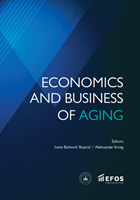AGING OF THE POPULATION IN EUROPE AND CROATIA AND ITS CONSEQUENCES
AGING OF THE POPULATION IN EUROPE AND CROATIA AND ITS CONSEQUENCES
Author(s): Antoaneta Klobučar
Subject(s): Health and medicine and law, Demography and human biology, Gerontology
Published by: Sveučilište Josipa Jurja Strossmayera u Osijeku, Ekonomski fakultet u Osijeku
Keywords: Population aging; depopulation; population aging statistics;
Summary/Abstract: In the paper, statistics on the aging of the EU population are observed first on the total number of inhabitants and then on individual countries that stand out with either the smallest or the most significant percentage of the old population. Data for the EU are given for the period from 2001 to 2020. In conclusion, the situation in Croatia was observed from 1961 onwards, with particular emphasis on the period from 2001 to 2020. Various statistical indicators were considered in the paper, including the share of the older population (over 65 years old) and the very old population (over 80 years old) in the total population. The share of the young population (from 0 to 19 years) and children (from 0 to 14 years) in the total population was also observed. The paper also analyzed the population’s average age, making comparisons across different time periods. The aging index represents the percentage of people aged 60 and over in relation to the number of people aged 0-19. An index greater than 40% indicates that the population of a specific area has entered the aging process. Assumptions were made about the future behavior of the number and structure of the EU and Croatian population and possible consequences thereof.
Book: Economics And Business Of Aging
- Page Range: 29-38
- Page Count: 10
- Publication Year: 2024
- Language: English
- Content File-PDF

